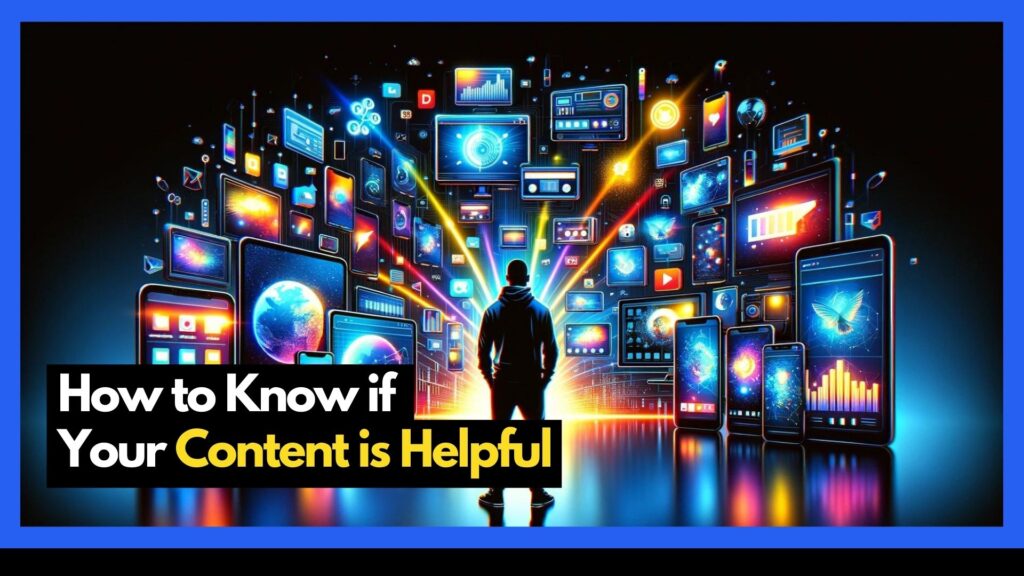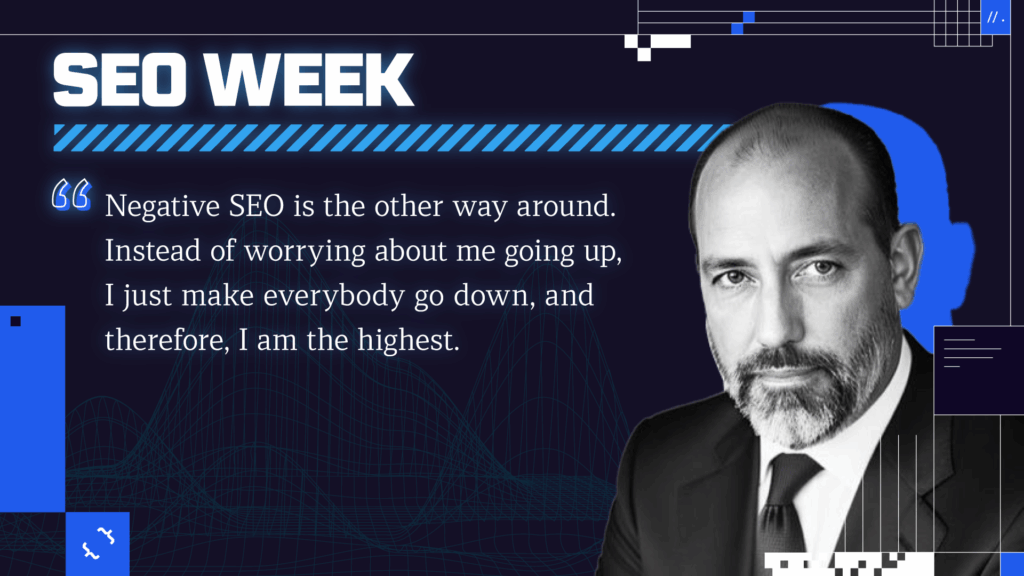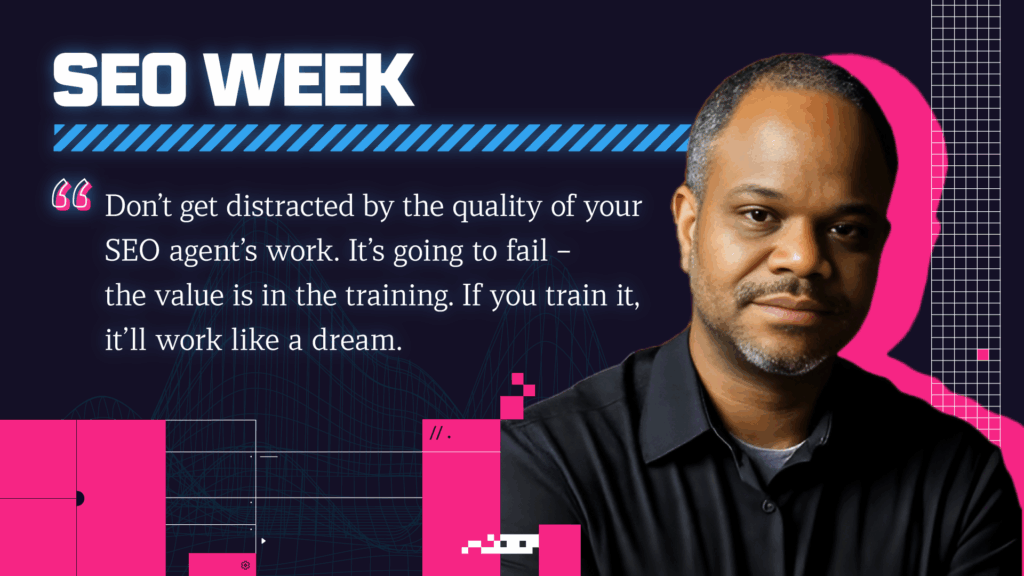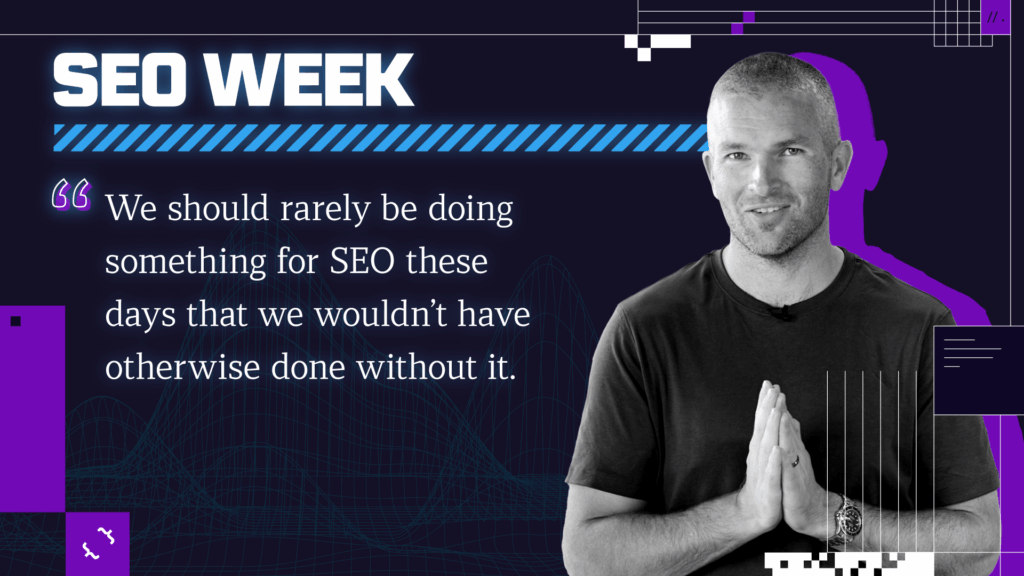Helpful content. It’s the harbinger of SEO think pieces everywhere. When a new algorithm update rolls out and the SERPs drop faster than a think piece can be written, experts come out of the woodwork to hail that helpful content will save the day! Google has even said that SEOs should focus on making great content. Read our thoughts on E-E-A-T and making great content.
We hear you, we hear you. But the question we keep scratching our heads over is: what in Larry Page’s good green Google is helpful content?
What is Helpful Content, Anyway?
We hear it all the time. Helpful content is the cornerstone of all digital marketing efforts. Provide your audience with high-quality, helpful content and they will come. Content is king. While all of these platitudes may be true, the missing piece that has yet to be definitively defined is: What exactly IS helpful content? If brands need to create it to be successful, how will they know if they have?
Common understanding says that helpful content is content that your audience (and potential customers) want and content that helps your business meet business goals. While both of those streams will make a content activation useful they do not always align.
Google’s Perception of Helpful Content
Google launched the Helpful Content System in August 2018. We tackled it on The SEO Weekly when it first was announced:
It’s now been integrated into the Core System as of the March 2024 Core Update. The Helpful Content System is a classification that Google uses to qualify entire websites. It’s part of an initiative to surface the best content in search results.
A piece of content can be useful to your audience (and it will show in their engagement) but not necessarily help to drive conversion goals. A piece of content can help drive conversions but not be especially effective for customer engagement or retention. Neither of these is a fail. But it is up to businesses to deem what helpful means to them.
- Is a Company’s About Us page, that does not drive business goals, helpful?
- Is a Returns/Exchanges page helpful?
- Is a post-purchase Thank You page helpful? How about a loyalty email?
How to Define Helpful Content
The helpful content conversation is not as black and white as engagement/conversions = helpful, low engagement/utility = not helpful. All content exists for a reason and if the reason is not clear then that content may not be meeting its helpfulness quota.
- The first place to begin in determining the helpfulness of a piece of content is with its purpose. How can you know if a piece of content has done its job if you don’t know what it is meant to do? Every piece of content should have a clear purpose.
- Next, you must architect that piece of content with the goal in mind. If its goal is to drive leads, the content must strategically contain lead generation markers including forms, lead scoring tagging, or visual nudges to drive users deeper into the funnel. If its goal is to drive social sharing, it must be engaging and social-worthy and have clear social share buttons and CTAs.
- Lastly, and this may be the most neglected part, you must OPTIMIZE that piece of content until it is a helpful machine.
With these tenets in mind, we would define helpful content with this equation:

In working with our clients in any content endeavor, we begin with a Content Audit that assesses the purpose and performance of each individual piece of content. We review content through this lens of usefulness, starting with the purpose, analyzing performance, and proving optimization recommendations.
How to Determine Purpose
There are tons of purposes for content and we align our endeavors with the buyer’s journey:
- Awareness: Homepages, About Us, Services
- Research: Services, Category Pages, Resource Content, Blogs
- Consideration: Pricing, Product Pages, Contact Us
- Purchase: Cart, Checkout, Payment Options
- Post-Purchase: Order Details, Confirmation Email, Tracking Details
This allows us to tie every piece of content to a stage to move a visitor through the conversion funnel. While a piece of content may not be useful in actually converting a customer, it can help facilitate and nurture them toward that process. By aligning content with the buyer’s journey we can see how each piece of content drives business goals without needing each piece to be purchase-focused.
Audiences need and want different things along the buyer’s journey and aligning your content’s purpose with how it ties into their decision-making process also gives you a clear picture of how to evaluate its performance.
We recommend performing quarterly content audits to assess that all of your content (and any newly deployed pages) is aligned with your journey. Additionally, when new content is being created we recommend tying the purpose into the briefing and strategy phase. The page’s job should reflect everything from the design, functionality, and copy.
A piece of content’s purpose should also be tied to marketing efforts including traffic, lead generation, or revenue. While these are tactical goals that will impact the content, all content should have a larger purpose tied to the audience and customer journey.
How to Measure Performance
Once you know a piece of content’s purpose you can begin to evaluate how it is performing against that goal. Since we have done the work of aligning content with its intended purpose, we must also align our measurement tools. Some metrics are better indicators of your content’s purpose.
You wouldn’t measure the performance of conversions by looking at blog posts’ comments. In the same way, you wouldn’t measure a checkout’s conversion rate by looking at social shares. How you measure your content’s usefulness has everything to do with its purpose.
One big mistake marketers make is trying to measure every page by the same metrics. This is a sure way to deem much of your site’s content not helpful. By looking at each page’s intention and then measuring it by that you will see that your content has different jobs and they may be more helpful than you think.
Metrics by Content Purpose:
| Awareness | Sessions, Time on Page, Bounce Rate, Pages per Visit, Exit Rate |
| Research | Pageviews, Time on Page, Exit Rate, Bounce Rate, Submission Rate |
| Consideration | Pageviews, Submission Rate, Time on Page, Exit Rate |
| Purchase | Time on Page, Conversion Rate, Revenue |
| Post-Purchase | Open Rate, Returning Visits, Repeat Purchase |
While these metrics help to qualify how well a page is performing with your audience, we recommend that every page has a conversion point so that you can put a hard metric to its helpfulness.
What that means is there should be a goal associated with every page. Even if that goal is as simple as keeping users reading for longer than 3 minutes. Or driving social shares. There should be a quantifiable goal tied to its purpose.
Read our Guide to Measuring User Journey with Content Groupings, WordPress and GTM
How to Optimize Your Content’s Helpfulness
So your content can not be useful if it does not perform to your goals. Since the goals have been aligned with the content’s purpose, optimizing and driving performance is a matter of incrementally pulling levers to see how the needle moves.
Content optimization is a matter of reviewing performance and then working to improve it. Let’s look at some standard metrics and devise an optimization plan.
| Purpose | Metric | Optimization Plan |
| Brand Awareness | Traffic, Time Spent, Social Shares | Improve IA / Taxonomy Optimize Content |
| SEO | Rankings, Organic Traffic, Links | Update Keyword Targeting Link Prospect/Outreach |
| Lead Generation | Sub Rate, Open Rate | A/B Testing, Heat Maps |
| Revenue | Cart Completes, Abandonment Rate, Order Size | Multivariate Testing |
Optimization plans should be cross-disciplined and include all of the parties involved in the original planning, creation, and deployment of content. Optimization can include SEO, CRO, UX/UI, and Analytics. Content managers should have dashboards to monitor content performance and regularly deploy updates to drive performance. By looking at a piece of content through the lens of its initial purpose, brands can strategically determine its usefulness.
If a piece of content is not performing its purpose, the intention may need to be changed or it may need to be noted that it does not work for that type of audience.
MAIN TAKEAWAYS
Helpful content is a nebulous buzz phrase but it has real marketing implications. Instead of racking our minds and throwing content at the wall, brands can define helpful content for themselves.
By determining a piece of content’s purpose, examining its performance, aligning metrics based on its intended purpose, and then optimizing to incremental performance based on the goal or goals, marketers and brands can come to a more tangible understanding of whether a piece of content is helpful or not. If the piece contributes to your goals, whatever the initial defined goal was, then that piece can and may be deemed helpful. Since no company has a single goal and there are many buyer touchpoints along the customer journey, there needs to be as much helpful content as possible to accomplish every goal.
How do you define helpful content in your business or organization?
Next Steps
here are 3 ways iPullRank can help you combine SEO and content to earn visibility for your business and drive revenue:
- Schedule a 30-Minute Strategy Session: Share your biggest SEO and content challenges so we can put together a custom discovery deck after looking through your digital presence. No one-size-fits-all solutions, only tailored advice to grow your business. Schedule your session now.
- Mitigate AI Overview’s Potential Impact: How prepared is your SEO strategy for Google’s AI Overviews? Get ahead of potential threats and ensure your site remains competitive with our comprehensive AI Overviews Threat Report. Get your report.
- Enhance Your Content Relevancy with Orbitwise: Not sure if your content is mathematically relevant? Use Orbitwise to test and improve your content’s relevancy, ensuring it ranks for your targeted keywords. Test your content today.
Want more? Visit our Resources Page for access to past webinars, exclusive guides, and insightful blogs crafted by our team of experts. Everything you need to keep your business ahead of the curve is right at your fingertips.
Take the next step with iPullRank.






